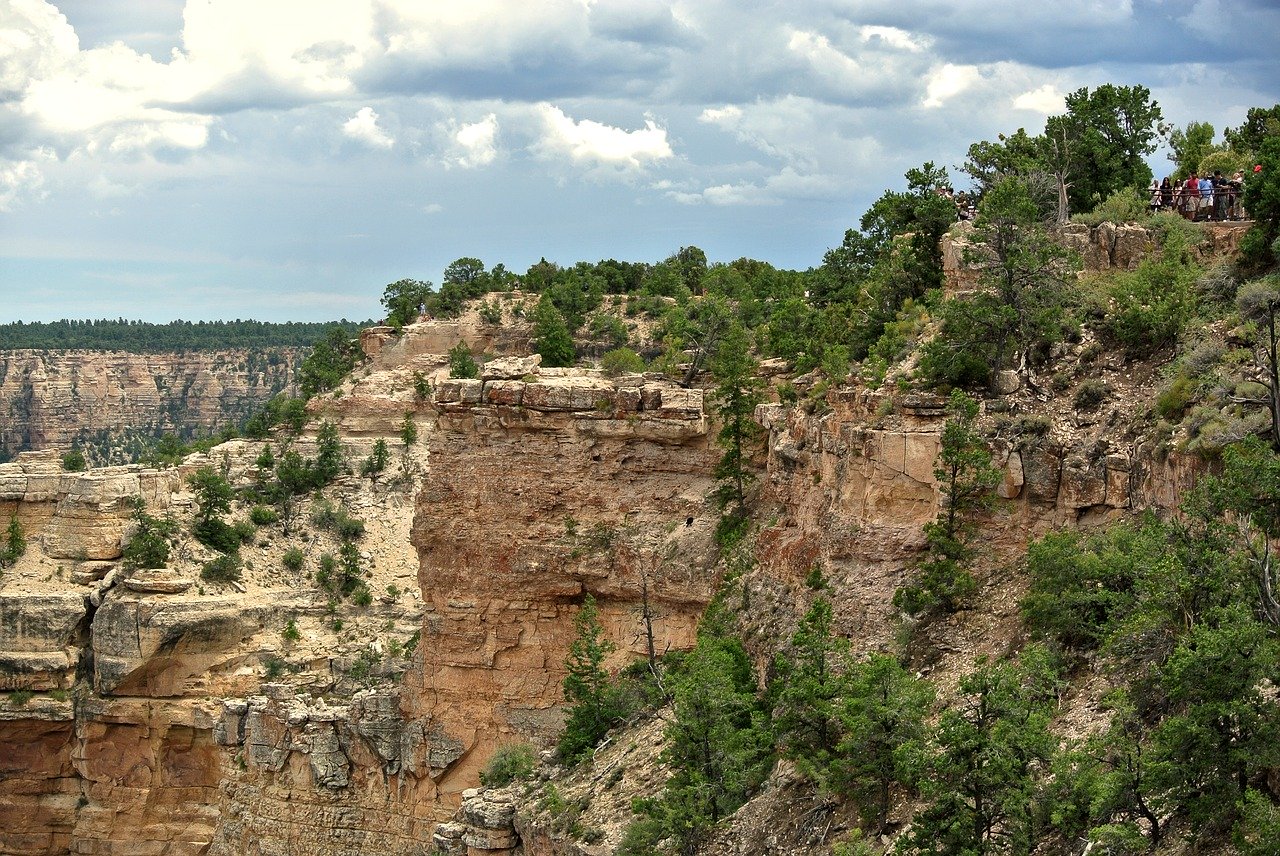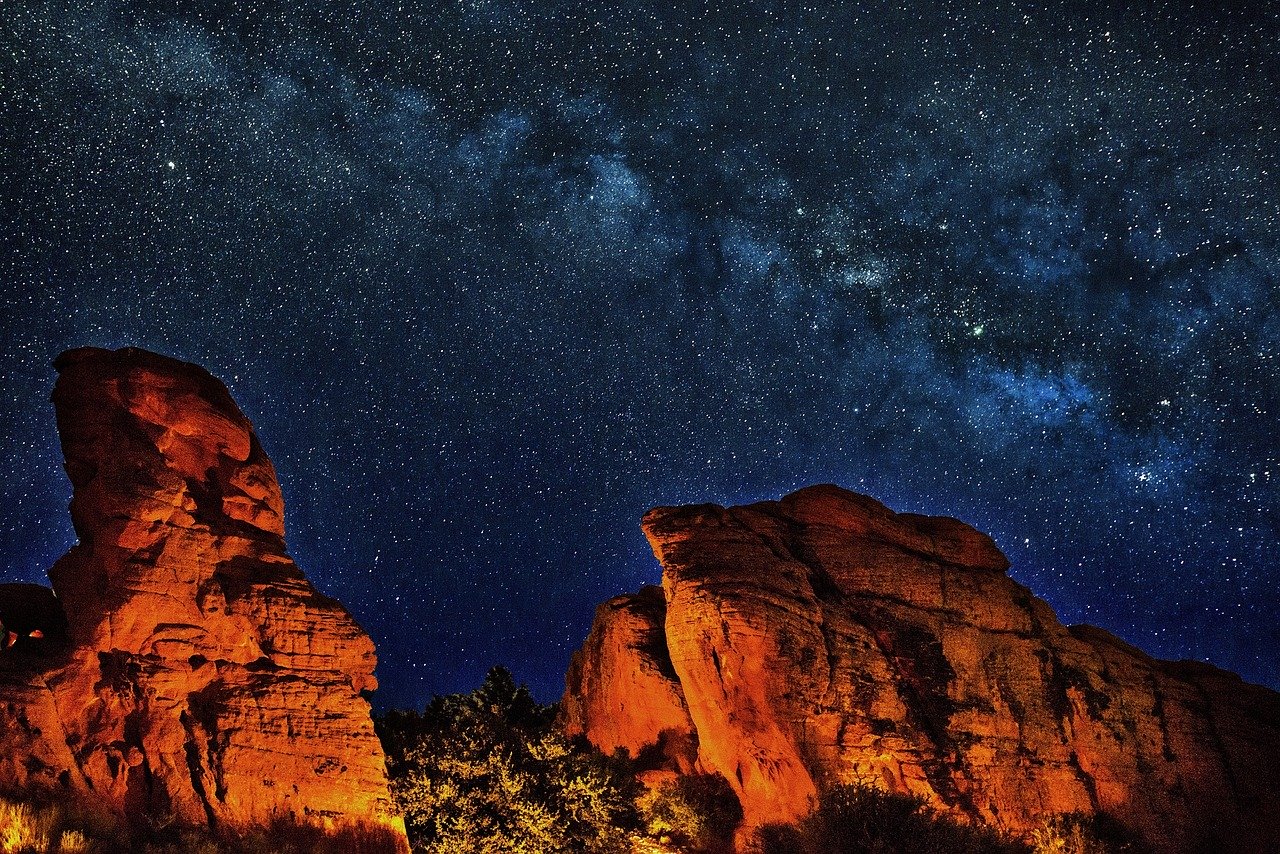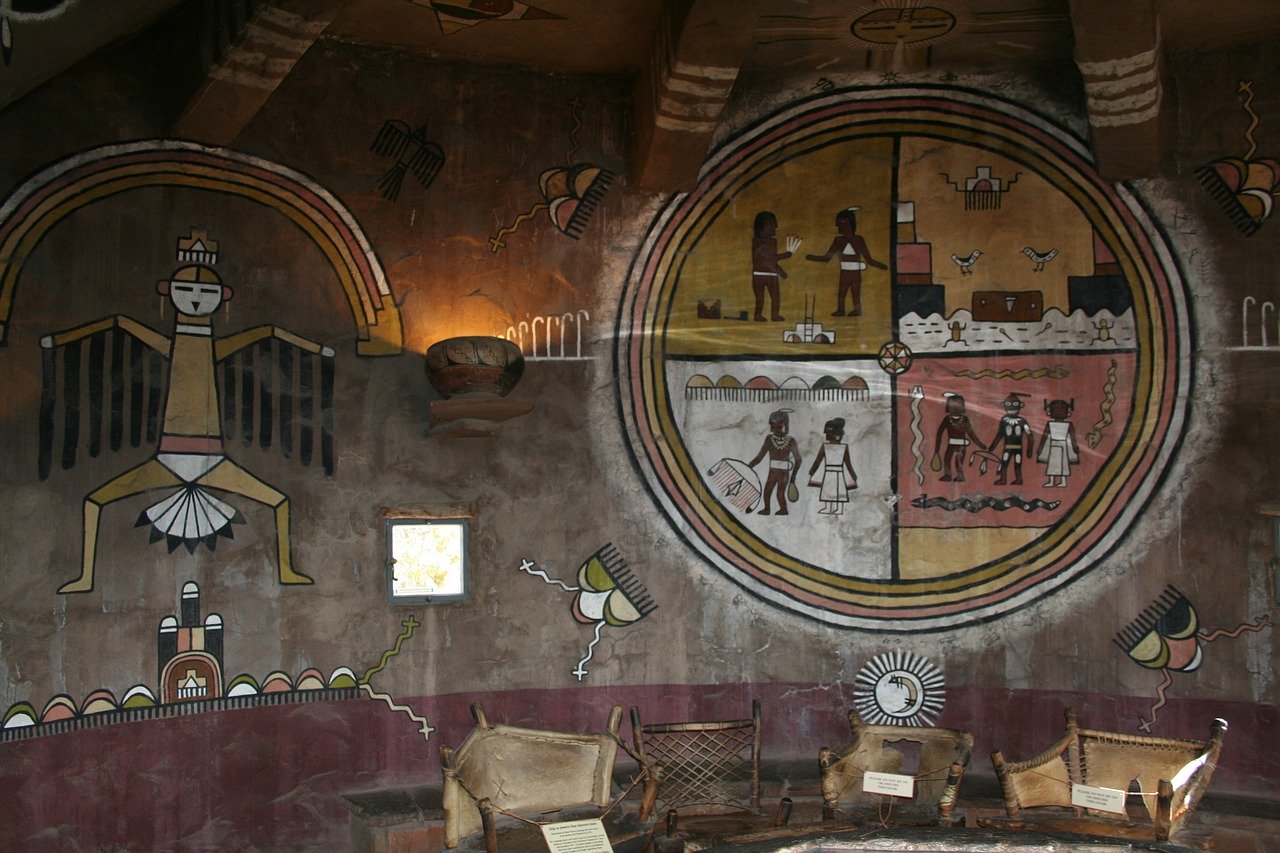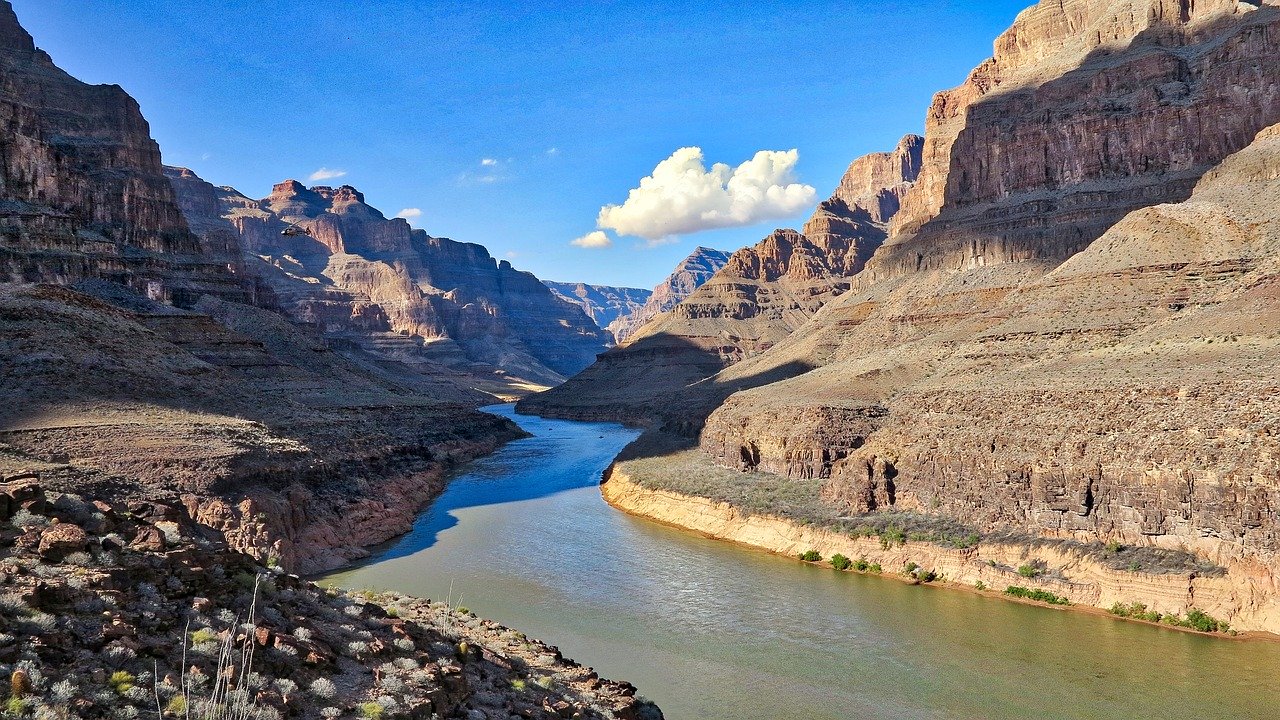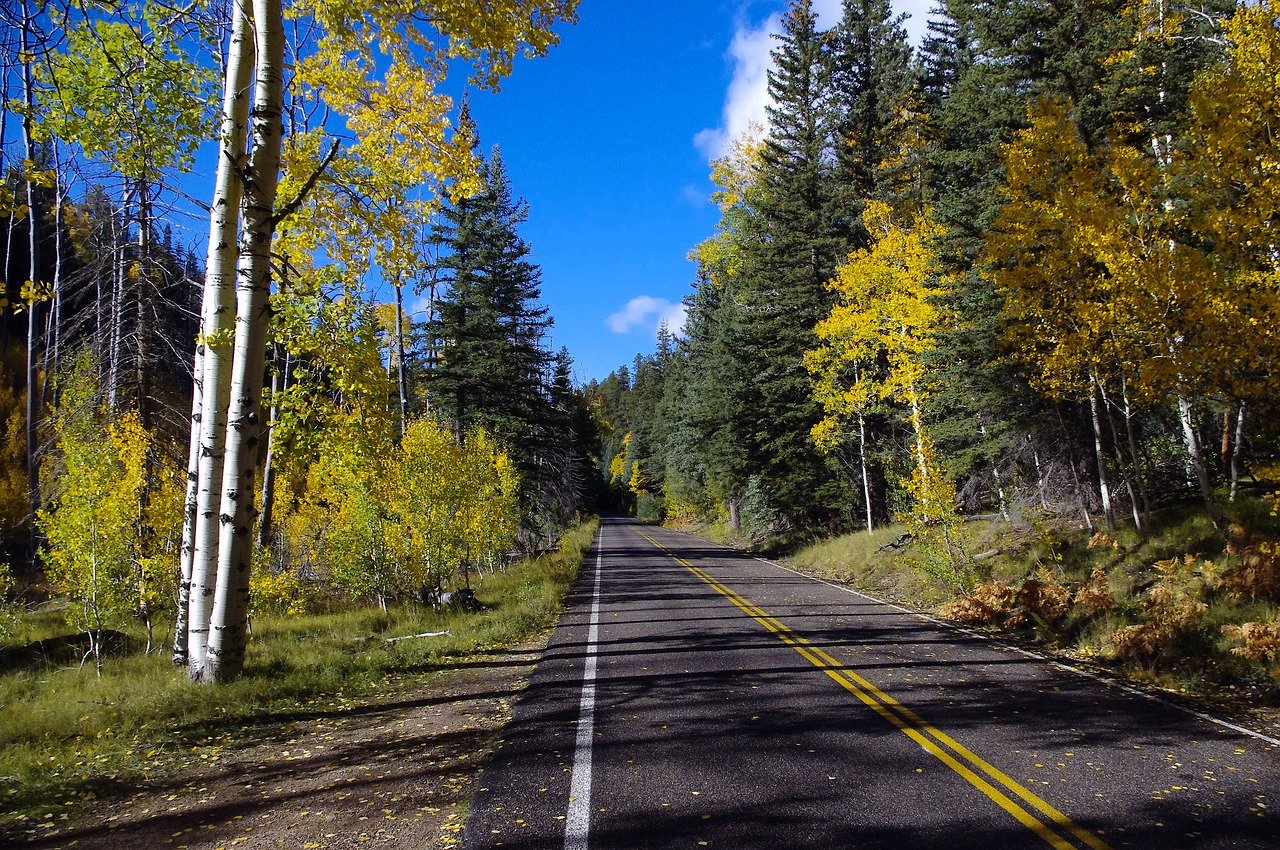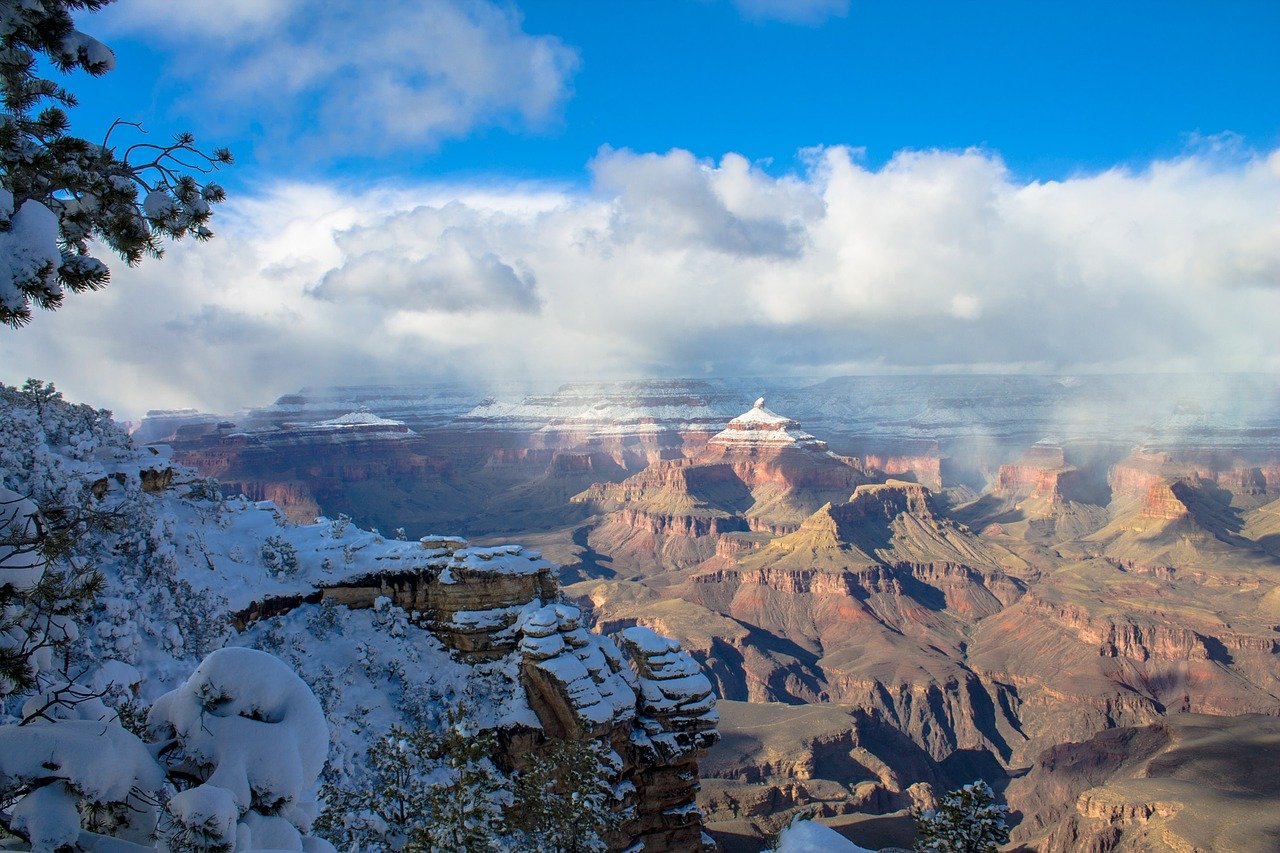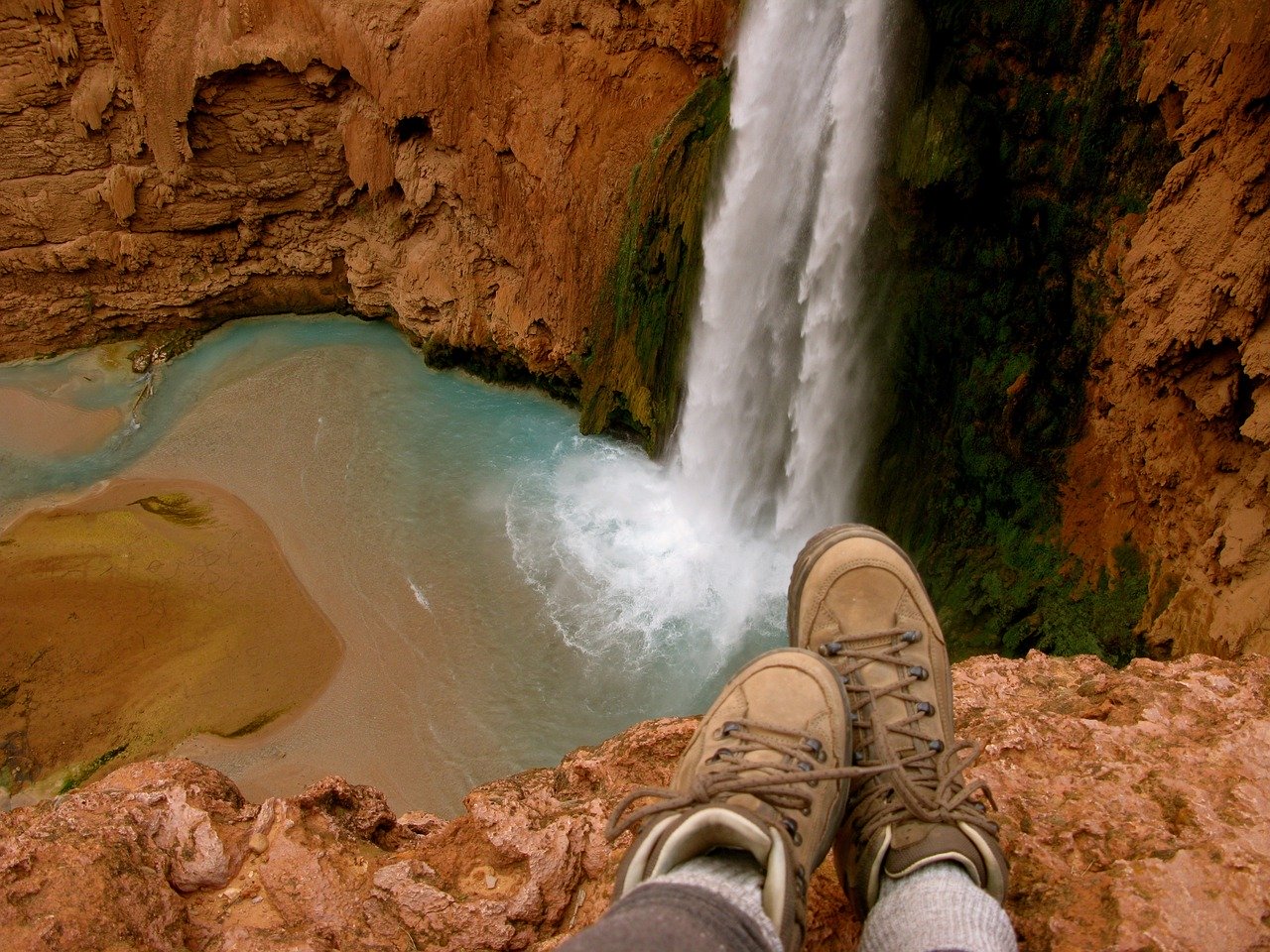Grand Canyon camping should be a phenomenal experience that you’ll commemorate for eternity. The Grand Canyon has a lot to offer as the second most visited National Park, in the nation. From its amazing, expansive viewpoints to lots of conspicuous landscapes, 6 million tourists are attracted to this gem annually. However, for some, it’s not all about glancing at the canyon top. Others want to exploit the unbelievable camping and hiking opportunities – among the best America offers – and this is by having to experience the Grand Canyon National Park first hand.
The Grand Canyon parades the unequaled value of the American West. Though every year the place is chock full, with millions visiting, most of them leave without experiencing the bliss of the place. SO, to access all the beauty of the Grand Canyon, first hand, camping is the way. Better still, camping opens gates to secluded trails, viewpoints, recreation activities, and much more.
Things You Need to Know in Advance
Enormous and incessant That’s the simple answer to the question: Why is the Grand Canyon categorized as one of the Seven Wonders of the World?
Here are a few interesting features of the Grand Canyon to beat your chest about while camping:
1. The Grand Canyon is Super Large
Boasting a size of 1904 square miles, the Grand Canyon has enough room to house the whole Rhode Island state. Great stuff!
2. Lot’s of Caves in There
Though only 336 caves can be traced within the Grand Canyon, it’s believed to house a staggering 1,000+ caves. Caving options are however limited. With the Cave of Domes being the only Grand Canyon cave open to the public. Still good. Or isn’t it?
3. It’s Terrifically Busy
Sitting in the second position among the most visited national parks in the United States, the Grand Canyon gets awkward. But, why isn’t it in the first place? The Great Smoky Mountains National Park in Tennessee sits there.
4. Beware of Squirrels!
From its popularity, it makes sense to conclude that the Grand Canyon hosts an endless number of wildlife species. Some are harmful let’s say the bears. But that’s not the case. The man to watch is the Rock Squirrel. This is the greatest predator over unaware tourists. Annually, a countless number of Rock Squirrel attacks are recorded in the Grand Canyon National Park.
5. Some Immense History Lies Here
The Grand Canyon National Park could be a dream today. Thanks to a great fellow it’s there/ President Theodore Roosevelt visited, fir the first time in 1903 and was wowed by the hugeness and magnificence of the Canyon. Roosevelt was quick to take action since he was afraid man would rush to exploit this gem and bring it down. In 1906, he declared it a game reserve, and after 2 years, a National Monument.
6. It Dates Back – Some Respect Here
Grand Canyon is among the oldest geological features lying within the hemisphere. It comprises of rocks that date back to over 2 billion years ago. When was that? We can just wonder?
7. An Ecological Sensation
The Grand Canyon is a hub for wildlife, with at least 25 reptilian species, 250 different bird types, 70 mammal species, and 5 amphibian varieties calling the place home.
The Finest Time to Visit the Grand Canyon
If you’ve visited Arizona, you need not be told that the temperatures can get extremely high – up to triple digits. During August the place is almost unbearable. It becomes very hot. Tourist season is usually during the summer, and the parks offer no space to breathe at that time. Do you get me? They’re usually full to the brim. Few people visit the park during spring and fall time, with kids in school, so people spare the touring for summer vacation. If you can organize a visit, then don’t hesitate. Do it. If it’s impossible, take some time earlier on and book for camping and RV spots, or resorts and hotels. Also, take note that the airfare will hike during the summer season since it’s the time for travel.
If it’s impossible to have a summer trip, why not visit the North vs South Rim. Looking at the North Rim, it gets fewer visitors compared to the South Rim. And it’s pretty cooler than the other side of the Grand Canyon. Though, From November to April the North Rim is usually closed so you’ve limited time to plan and make your visit. On the other end, the Grand Canyon is mostly open until the winter period, and the main park entrance is usually closed starting from mid-December depending on the extremes of the cold weather and snowfall.
To enjoy your visit to the Grand Canyon you should prepare to obtain a permit. You can’t just dive into every activity there. Though you’ll walk around the rims very easily, in case you feel hiking, rafting and backpacking are for you apply for permits in advance. The funny thing is that the permits are granted using a lottery system to ensure fairness to those willing to visit the Grand Canyon.
The Best Camping Grounds at the Grand Canyon
The Kaibab Camper Village
Located on the North Rim, the Kaibab Camper Village is one of the most luxurious and already established camping grounds. It also is the only best camping spot for RV owners on the North Rim. You could also choose to camp in the cabins and primitive camping tents in the village as well. One of the best things about this campsite is the fact that Jacob Lake is only a few miles away. This thus makes it easier to restock your groceries or beer in no time, hence you never have to drive miles for the same. Firewood is also in plenty here, thanks to the ponderosa pine trees that are everywhere.
Cottonwood Campground
Cottonwood Campground is the perfect place for a backpacking trip at the Grand Canyon. It is located just 7 miles from the North Rim on the North Kaibab Trail. Several miles from the Colorado River, this campground is one of the less frequented ones seeing only a few backpackers and hikers in a year. This thus makes it the perfect camping ground for anyone looking for a quiet, rustic, and peaceful environment. Its strategic location means only a few, and probably experienced backpackers and hikers, will choose to camp here. Very few ‘casual’ campers decide to come here.
The campsite is also surrounded by some of the best desert-type sights and hiking trails you will find at the Grand Canyon. You thus can enjoy some of the best sights and features, including other side canyons, Ribbon Falls, as well as the stunning bright yellow canopy from the cottonwood trees. It is, however, worth noting that bottled water isn’t available all the time here. You can or will only have filtered water from the Bright Angel Creek during your stay. You could, however, bring your water if not particularly fond of the filtered water available here.
Jacob Lake Campground
Sitting on the main access route to the North Rim, Jacob Lake campground is presumably the most preferred camping ground here. In addition to its strategic location, the Jacob Lake Inn and the country store are just a few meters away, which again makes it many people’s favorite campground. The campground is surrounded by massive ponderosa pine trees and offers plenty of hiking and sight-seeing opportunities for all here. The North Rim, for example, is just an hour down the trail. With hundreds of people looking to camp here, you’d be required to make bookings in advance to secure a spot at the car-camp. Lots of visitors, hikers, and campers come to Jacob Lake Campground in summer when the weather is perfect for camping. It is during this time of the year that you get to experience pleasant days and cool nights. The camp, however, remains closed during winter (at the start of November) due to the heavy snowfall experienced here.
Hermit Trail Campground
Also known as the BM7, the Hermit Trail campground is among the most remote camping sites in the whole of the Grand Canyon National Park. The trail itself isn’t for the faint-hearted as it will present you with all forms of challenges with over 9 miles of runs and knee-pushing switchbacks from the South Rim. This is the campground to visit if looking to put your backpacking skills, strength, and stamina to the test. The pain of hiking to the campsite is, however, worth every bit of it; the Hermit Trail Campground rewards with absolute peacefulness and remoteness the Grand Canyon can offer. The campground is, however only a stone-throw from the famous Hermit Rapids and the Colorado River. The Colorado River provides life here, which is evidenced by blooming flowers and the crystal-clear natural water from the Hermit Creek. Other rewards you will get for coming here include peaceful quiet nights, lots of water time, and breathtaking canyon views, among others.
The North Rim Campground
Located less than a mile from the North Rim Lodge, the North Rim Campground sits at the edge of the Grand Canyon at approximately 8,300 feet. It thus provides the perfect view of the North Rim below and is home to around 100 developed campsites. The campsites are strategically placed with ponderosa pine trees surrounding them. It also receives a warm breeze from the North Rim as well. The North Rim Campground is also among the most popular campsites during summer. Many hikers come here to see firsthand the breathtaking views of the North Rim, and also because of the amenities close by. You will also find many RVers camping here as well. It’s popularity, however, makes the campground a little too noisy, especially for those looking for some quiet. You might, therefore, want to reconsider if looking forward to a romantic getaway.
Mather Campground
Mather is considerably one of the most established but biggest campsites at the Grand Canyon. Located at the edge of the South Rim, Mather Campground is just within the Grand Canyon village with plenty of restrooms, general stores, bars, showers, to name but a few. Thanks to its strategic location (at the entrance of the Grand Canyon Village), the campgrounds boasts of over 300 campsites, making it one of the most popular and frequented campsites at the Grand Canyon. You can access the campground with a shuttle or even an RV, another factor that makes it a preferred choice for many.
Desert View Campground
This campground is located on the far eastern side of the Grand Canyon. The campground is considerably smaller than all the others and has a drier feel than the rest. Nevertheless, it provides an extensive view of the Colorado River. Desert view campground is also within close proximity to the historic Grand Canyon ‘Watchtower’, as well as the Rim. It will take you less than 15 minutes to get to the ‘watchtower’ and the Rim. Commonly underrated, the Desert View Campground works on a first-come-first-serve basis. The best way to secure a spot at this campsite is if you make bookings early, and take advantage of off-seasons and the weekdays as well. The campgrounds are almost deserted during these times.
Indian Gardens Campground
Anyone visiting the Grand Canyon should add Indian Garden Campground on their bucket list. It is the preferred campground for most backpackers and Grand Canyon patrons who refer to it as the paradise in the desert. The Indian Gardens, though hidden by the height of the walls, has a perennial creek that breaths life to all that it touches. Expect to find lots of life, flowers, and greenery in this campsite, which have earned it its name, the Indian Gardens. The campground is located on a 4.6 mile, 4-hour descent, from the edge of the canyon, off the South Rim. Make a point to come here to enjoy the beautiful scenery while sitting next to the ever-flowing creek.
Bright Angel Campground
This is hands-down the most sought-after campgrounds by both amateur and experienced backpackers in the Grand Canyon National Park. The Bright Angel Campground lies at the bottom end of the canyon, off the South Kaibab and Bright Angel Trails. The one thing that makes this campground unique is that most backpackers will hike down the canyon for one day, rest and play, then back up the next day. While the hike is a little over 4.5miles, most first-time backpackers find it too strenuous to consider venturing any farther.
Bright Angel Campground is only ½ mile from the Colorado River to the North, hence the ideal place for many backpackers to rest. Most people find peace and have fun here playing with the water in the Colorado River. Many will also take on rafting tours while at it as well. It is also for this reason that the campground is often referred to as the lazy backpacker’s ‘heaven.’ The best thing about visiting the Bright Angel Campsite is the restaurant and bar in the middle of the camp. You can thus enjoy an ice-cold beer here and even have a postcard sent by mule train to your friends and family.
Tuweep Campground near Toroweap
Tuweep Campground is the best place to be if looking for remote, simple, and uncrowded camping experience in the Grand Canyon. True to that, there are only 9 sleeping spots available at Tuweep campgrounds. Among other reasons, Tuweep campground is off the North Rim and in the middle of nowhere. The only way to get here is if you have a high-clearance car and a 4×4 for that matter. The roads here are quite tricky and challenging to maneuver; another reason why very few people choose to camp here. There’s a 90% chance that you will be camping alone here, should you choose to. This is because most people choose to camp at other camps, simply because Tuweep is far off the grid.
The campsite is located just off the edge of the famous Toroweap Overlook. Unlike all the other viewpoints of the Grand Canyon, the Toroweap Overlook sits at the edge of a 3,000-foot cliff overlooking miles and miles of the Canyon walls and more than 300 miles of the Colorado River to the west. The cliff dumps into the Colorado River itself hence provides a breathtaking view of both the river and the Grand Canyon mighty walls. Be sure to bring a camera with you when you come here to take pictures of the beautiful scenery only seen from the cliff. This thus earns the Tuweep Campground as the Grand Canyon’s absolute best camping spot.
Different Activities in Grand Canyon National Park for Every Season
Spring
The Tuweep Region
It is a remote location, being 3 and 1/2 hours drive away from the North Rim, which automatically implies that it is the place for those looking for natural adventure, where plants, rivers, and the cliffs dominate. In fact, this zone has no network reception, built accommodations or gas facilities, promising to take your mind away from the hustle and bustle of the city, if this is what you’re looking for. It is indeed a perfect region for bold adventurers and nature lovers. At your disposal are the panoramic views of the cliffs, canyons, and the impeccable Colorado River. Activities here include horseback riding trails, hiking, and cut-rate camping. If this sounds like heaven for you, get an RV or trailer that is less than 22 ft long and you are good to go!
Biking in the Grand Canyon
Being a renowned destination, the roads of the Grand Canyon National Park are almost always heavy with traffic from RVs and shuttles. This does not mean that biking is exempted. There are numerous trails in the interior that you could explore without constant honking from vehicles. One such picturesque point during Spring is the South Rim, its views are hard to beat and with your bike, you get to stop and take in the gorgeous environs without worrying about the traffic behind you. If you couldn’t manage to tag your bike along, you could rent a bike and even hire a tour guide if you’re reluctant to take the risk of exploring by yourself.
The Grand Canyon Field Institute Learning Adventure
As with any activity, when you want to do something well, learn about it first, then you have a complete guide on how to reap the most. Here, you get to learn a lot from a variety of tours and classes. These include backpacking, hiking, and skills like writing, photography, and yoga. You could also learn the history of the Grand Canyon, see its cultural and natural evolution, then get to appreciate its current state from an informed point.
Walk the Trail of Time
When looking to gain the most from the stunning environs, perhaps the best option is walking. Breathe in the air, take in the very minute details of the park and even touch some rocks to see what they have to tell about our past! Spring is the perfect time for this, where the crisp, refreshing atmosphere makes a walk along the Trail Of Time unforgettable. It is about 2 miles long and has incredible views of the towering rocks and wondrous vistas around. Along with this comes a guide who fills you in on all there is to know about the canyon from the start of the journey. A free shuttle is also provided once you opt for a half-trail trip. A perfect time for all nature enthusiasts, take in Arizona’s beauty with a walk in the trail of time!
Summer
The Mather Point Overlook
It is the ultimate viewpoint for many, and with good reason. It is the first point where the recreational vehicles stop, to allow visitors to catch a view of the great Canyon. Besides this, the spot is only a few feet away from the South Rim Visitor Center and the RVs’ parking point. You could, therefore, easily peer at the grandeur of the Grand Canyon without walking for long in the summer sun. If walking is your cup of tea, however, proceed on to the Rim Trail for more!
Grand Canyon Rafting Tour
No adventure is complete without an adrenaline rush, more so in the cooling waters of the Colorado River amidst the scorching summer sun. This is why there are 278 miles of the water world-class whitewater rafting awaiting you, accompanied by trained tour guides for safety. With every turn and bend, comes a refreshed string view. It is the ideal setting for a bold summer.
Grand Canyon Star Party
We long for summer nights for two things, the crisp sky view, and warm weather to be out even while it is dark. All visitors and residents of the Grand Canyon, therefore, should engage in casual stargazing and astronomy in the clear dark skies. This is available both in the North and South Rim, where after a long day of exploring the vast landscape, by night, you could unwind with the sumptuous summer sky.
Railway Express Tour
It is also a great way to escape the summer heat. In the morning, you depart from the Grand Canyon to Williams Train Depot. Here, all grogginess after a long night’s sleep is taken away by an iconic Arizona gunfight. After this, you will then board the train to take an hour-long journey filled with a variety of entertainments that characterize the interesting wild west, to get back to the Canyon.
Mule Rides
Riding a mule completes the hot-sun Arizona look. Simply opt a short one hour ride, half-day ride, or even trip down into the Grand Canyon in a mule or horseback. It is exciting, and a memorable experience that is worth framing. Available both on the South and North Rims, it is a must-do in any canyon summer trip.
Fall
Helicopter Tours
A bird’s eye view of the Grand Canyon is without a doubt unrivaled. For this, you will find a couple of commercial businesses in Sedona, AZ, NV, Las Vegas, and even Tusayan near the South Rim. In either of these, you could hire a helicopter tour for one hour to half-day tours. To get the most out of your visit, simply take a helicopter ride for an unforgettable experience.
North Rim Day Hike
A Grand Canyon National Park trip is not complete without a hiking session. It is a perfect way to release and take off the weariness of our normal lives. The solitude, sceneries, full-body workout, and spectacular natural environs are the perfect recipe to unwind, find inner peace, and even recover from stressful events. The North Rim is particularly breathtaking in the fall, making it the supreme hiking point at this time.
Wildlife Viewing
Accompanying the wild natural environments are the beautiful wild animals. These include the mule deer, ringtails, hog-nosed skunks, mountain lions, bighorn sheep, and the distinguished elk. Be sure to bring your binoculars and cameras along to capture these captivating animals in their natural environment. You should, however, uphold all safety measures put in place to preserve the existing wildlife. Avoid approaching, disturbing or any form of intrusion, after all, this is their home, and you’re just a visitor.
Visit the Tusayan Ruins and Museum
Here you will find the remains of a small village belonging to Native Americans known as Puebloans. The ruins exemplify their living conditions and social structure at the time, and more illustrations are found in the museum where you will find various artifacts some being pottery and hunting gear like arrowheads. This site is located 3 miles from the dessert view and is free. Learn some more about American History by exploring the previous life of Puelbleans!
Photography
The Grand Canyon National Park is breathtaking, which makes it a popular destination for many photographers. If images are the main reason for your visit, the perfect season for photography would be Fall. The climate and lighting at this time bring out the color, texture, and depth of various hotspots.
Winter
Desert View Point
The ideal time to visit a place as hot and dry as the desert would be winter when the atmosphere it a bit bearable, to say the least. At the Desert View Point, you get to climb to the very top of a 70-foot watchtower. This gives you a wide-angle, fish-eye, and panoramic view of the park, as far as the Colorado River and the Painted Desert. You could also stop at a general store to buy some snacks and supplies.
Historic Hopi House
It is a renowned art and crafts National Historic Landmark. When looking for authentic crafts from history to buy for your interior design, history class, or any other reason, the Hopi House has a vast high-quality selection of native items to choose from. Carry some Arizona history with you to remind you of your awe-inspired trip to the Great Canyon.
Yavapai Observation Station
It is only a mile away from the Market Plaza and uses a myriad of illustrations to explain the natural formation of the Canyon. These include 3D models, images, and other exhibits that tell the tale of this stunning complex geological site. Besides learning, you also enjoy a great view of the Canyon.
Mary Colter’s Lookout Studio
It was built in 1914 and lies at the edge of the South Rim in the national park. It is a must-visit, especially for photographers, since it offers the perfect spot to take phenomenal images of the Grand Canyon. You could also buy some books, souvenirs, fossils, and other gifts from the gift shop therein to commemorate your trip.
Scenic Hermit Road
Last but not least, is the unique Hermit Road. For the better part of the year, the road is closed for private use which makes winter; December to February, the perfect time to trudge upon this trail to get a breathtaking view of the Grand Canyon National Park!
Notable Concerns in the Grand Canyon
- Storing Food: It’s important to protect your food from ravens and rodents. You’ll not enjoy the experience on an empty stomach. The storage should be an issue. The back-land sites, Cottonwood, Bright Angel, and Indian Garden campgrounds offer strong metal storage containers and it’s mandatory to use them. For the other sites, you require a “rat sack” or other usable storage canisters. Other essentials like toothpaste and soaps should as well be placed in the storage containers together with the food. Undo all zippers. Rodents may chew through them and get to your pack.
- Stickers and Thorns: Most plants have these. For your mattress, pick a closed-cell foam one or use a pad-repair kit, that’s if you know how to use one.
- Drinking-Water: Most people hiking the canyon for the first time think they’ll not need much water. Well, that’s dangerous. Carry many gallons of the same plus electrolyte drinks, and still locate reliable sources of clean water on your way. Remember all the water should be treated. For example the one from Colorado River that’s mostly used by rafters. Remember to pack some extra filters because the water is concentrated with silt.
- Threatening River Hazards: It nice if you want to relax and cool off near the Colorado River. Stay woke, hypothermia and currents may strike. Upriver dams, that make rapids greater and temperatures low determine the way the water flows. The Colorado River has sublime currents – very powerful ones – so better be cautious.
- Merciless Thunderstorms: After thunderstorms, flash floods, mostly in narrow side canyons are something to worry about. Keep a close eye on the horizon. Storms may fall above you and could be life-threatening, even though they don’t fall on you. In summer, the fierce lightning strikes are another hazard. For more details on weather reports, visit the weather dangers page. Thoroughly review the reports before packing and leaving, to avoid encountering storms on your way.
- 15 Best Free Online Virtual Summer Camps for Kids (2022) - July 6, 2021
- Expert Roundup: Advice to Mitigate the Effects of Coronavirus - March 22, 2021
- Best Gifts for Travelers - January 15, 2021


